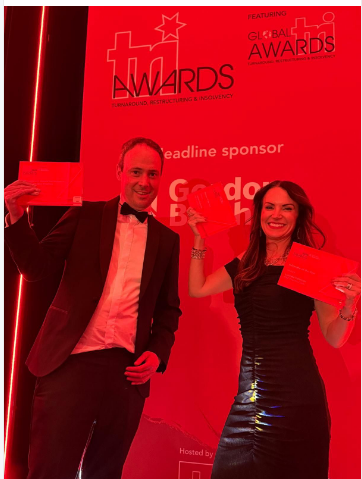
R&D update: May 2025
With the world of R&D tax credits evolving rapidly, companies making or considering claims now face a growing number of considerations. Several legislative changes have introduced numerous pitfalls. As a result, businesses should now plan their R&D claim processes much earlier than before.
Claim notification forms
For accounting periods commencing on or after 1 April 2023, companies should consider whether a claim notification form (CNF) is required. A CNF is required within six months of the end of an accounting period for which an R&D claim is envisaged. This is unless an R&D claim has been made in the three years prior. However, the three-year rule is complicated. In certain situations, companies which have made R&D claims in the three-year period will still be required to file a CNF by the given deadline. Failure to file a CNF when one is required will invalidate any later submission of an R&D claim for that period. It is therefore essential that companies considering an R&D claim, whether new or a recurring one, check to make sure that they have met the CNF requirements. Following an issue with HMRC’s incorrect guidance around CNFs, HMRC have confirmed that in certain circumstances they will accept claims where no CNF has been filed due to reliance on the previous incorrect guidance. Find out more here.
Changes to rates
A number of changes have been made to the R&D regime in recent years, resulting in changes to the various rates of relief available. For ‘merged scheme’ claims for accounting periods commencing on or after 1 April 2024, the net benefit will typically be 16%. This is a significant reduction for those companies that were claiming under the SME scheme in earlier years where the net benefit was between 25% and 33%. Consequently, companies need to factor in these changes when considering cashflow impact of the claims they are making.
Merged regime / QIPS / late payment interest rates
For accounting periods commencing on or after 1 April 2024, the merged scheme will replace the old SME scheme for R&D purposes. While the SME scheme offered an additional deduction from taxable profits, the merged scheme now provides a taxable credit that companies can offset against their tax liability. The impact of this is that whilst an R&D claim under the SME scheme reduces the taxable profits for the purposes of corporation tax quarterly instalments, the same is not true for the merged scheme. The result is that quarterly instalments may technically be due even though a later merged scheme claim will see that tax refunded to the company. Should the company not make quarterly instalments in the interim period, it will be liable to a late payment interest charge of 6% historically, rising to 7% from 1 April 2025. Whilst HMRC do not commonly make use of this power, they have the ability to fine companies which do not make quarterly instalments when they should do so.
There were also broader changes to the quarterly instalment rules applicable for accounting periods commencing on or after 1 April 2023, the result of which is that it is more likely that companies will fall into quarterly instalments going forwards due to an extended definition of ‘associated companies’ for these purposes.
If you are in doubt about whether you need to make quarterly instalments or how your merged scheme claim will impact your quarterly instalment calculation, please get in touch.
General update on HMRC enquiry trends
Since the initial surge of HMRC enquiry activity in 2023 which saw one in five R&D claims enquired into, as a firm we have seen HMRC open very few new enquiries in 2024 and early 2025. However, we are aware from speaking to other firms that HMRC have issued a number of new enquiry letters in recent months.
Recent reviews of HMRC’s enquiry letters suggest a concerning trend. HMRC continues to request information that companies have already provided in their initial R&D reports submitted with the tax return. This practice unnecessarily prolongs the enquiry process and often focuses on issues that present minimal risk. We have provided feedback on this to the Chartered Institute of Taxation (CIOT) and the Institute of Chartered Accounts for England & Wales (ICAEW) and anticipate this will be relayed to HMRC.
We’ve also continued to see HMRC asking for the underlying evidence of R&D activities. Some companies have failed to retain this evidence, therefore struggling to provide when asked to do so. Typically, HMRC are asking for:
- Staff contracts
- Internal R&D presentations / notes
- Patent applications
- Design drawings
- Photos / videos / schematics
- Test related documentation
- Detailed project timelines
- Underlying rationale for cost allocations, but particularly staff costs where no timesheet system has been used
Companies making or considering making R&D claims should ensure that R&D submissions are well prepared. They should be carefully thought through, and well-disclosed – with underlying evidence retained to support the claim itself. Teams are encouraged to capture R&D evidence more contemporaneously. Organisations should consider implementing timesheet systems if they are not currently in use. Claimant companies should also consider whether HMRC enquiry fee protection is appropriate for them.
R&D intensive claims
In addition to the introduction of the merged scheme, HM Treasury also introduced the concept of the R&D intensive company which allowed enhanced rates of relief. The first claims in relation to the R&D intensive relief have gone in across the last few months, however to date these have not been processed or paid by HMRC, even though these claims have been with HMRC for periods well in excess of the normal processing times. HMRC has now confirmed that they are holding back these claims pending a greater level of scrutiny before they are processed – but have given no indication of the likely timeline.
Subcontracting issue
Around 2019, HMRC began challenging R&D claims made under the SME scheme where the R&D in question was undertaken as part of a wider product or service supplied to a specific customer or customers. For many involved in R&D claims, this marked a departure from what had been understood as the position for over fifteen years.
Ultimately, HMRC took three cases to the First Tier Tribunal (FTT) and lost all of them. The most recent case was towards the end of 2024. In February 2025, HMRC confirmed that they would respect the decision of the FTT. They have updated the guidance to reflect the decisions made in the three cases.
Claimant companies who are undertaking R&D as part of a product or service delivered to a customer should consider:
- Whether the R&D is incidental to the supply of the product or service, or whether it is the R&D itself which is being contracted out
- The degree of autonomy
- The ownership of the intellectual property rights arising from the R&D activity
- Who is taking the financial risk associated with the R&D activity
Going concern issue
R&D tax credit claims typically come with conditionality around the going concern status of the claimant company. The definition of going concern is tied into the accounting definition of a going concern. This was designed to prevent HMRC paying out R&D credits to companies that were otherwise insolvent. It had long been recognised that there was an issue whereby an intra-group transfer of trade technically rendered the transferor company a ‘non-going concern’ from an accounting perspective and technically precluded an R&D claim, even though the company was actually solvent.
To deal with this, a change in the legislation was introduced for accounting periods commencing on or after 1 April 2023 that exempted intra-group transfers of trade from the going concern requirement. However, having reviewed a recent case, we have identified the legislation does not achieve the intended result. We have shared this conclusion with the CIOT who in turn raised the matter with HMRC. HMRC have acknowledged there is an issue with the legislation. Where the issue is identified, we believe there are some potential solutions whilst we wait to hear from HMRC.
Our blog here describes the matter in more detail.
R&D advance clearances
In March 2025, HMRC announced a consultation in respect of advanced clearances for R&D tax credit claims. We will be submitting our thoughts on this issue to the ICAEW and CIOT in due course. Whilst the general objective is to be commended, it is hard to see how this will work in practice. HMRC has very limited resource in this area and limiting advance assurances to certain taxpayers feels problematic. Find out more here.
Patent box guidelines for compliance
We are seeing an increasing number of clients making patent box claims. Historically, HMRC do not appear to have focused much resource checking patent box claims and calculations. However in November 2024 they published guidance for companies making patent box claims. This guidance highlights risk areas they would expect claimant companies and their advisers to have considered before making a claim.
Following the R&D enquiry programme of 2023, it is reasonable to conclude this is HMRC warning companies in advance that compliance checks relating to their patent box claims and calculations are likely to follow. Consequently, companies making such claims should ensure they are well thought through, robust and clearly disclosed in their tax returns.
How can we help?
The complexity arising from the submission of R&D claims has dramatically increased in recent years. Companies making or considering R&D claims for the first time are strongly encouraged to engage proactively with their R&D adviser. Early conversations ensure claims are thoroughly addressed and potential issues are identified and resolved before they escalate. Get in touch with our team here.












